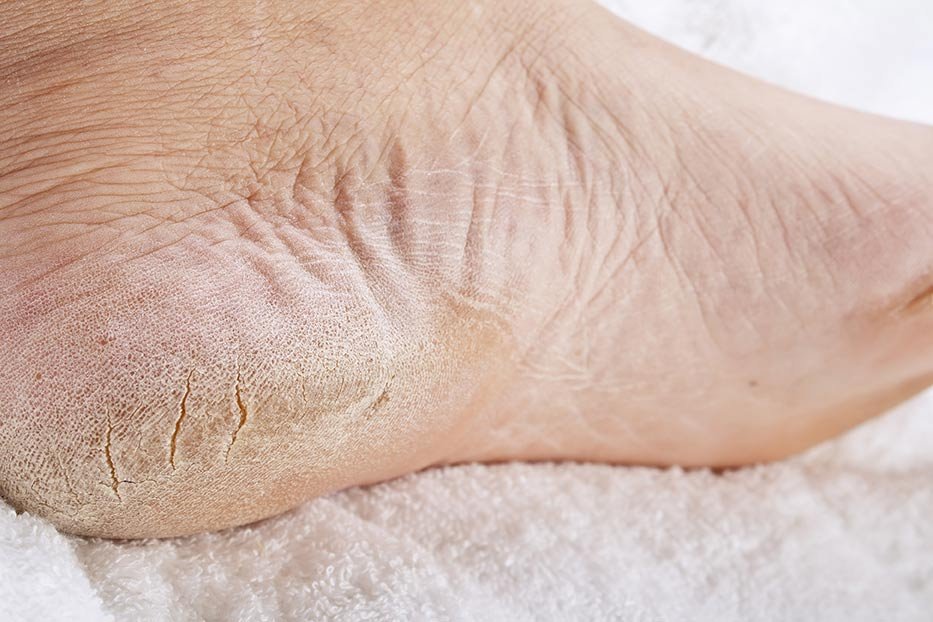The science behind Neuropad®
Neuropad® is a unique, patented medical device for the early detection of peripheral autonomic neuropathy which is a common complication of diabetes. The test screens for autonomic neuropathy by using sudomotor dysfunction (lack of sweating) as a surrogate or proxy as this is highly correlated with innervation of the foot in a person with diabetes.1,2,3
MOTOR NEUROPATHY
Motor neuropathy affects the nerves responsible for controlling voluntary muscle movement.
Reduced flexibility leads to foot deformities.
It can also lead to symptoms such as muscle weakness, muscle atrophy (shrinking), cramps, twitching, and difficulty with coordination in various parts of the body, including the limbs, hands, and feet, causing difficulties in tasks such as walking, grasping objects, or maintaining balance.
DIAGNOSTIC TOOLS
- Pressure stat
- Tendon reflexes
SENSORY NEUROPATHY
Sensory neuropathy affects the nerves responsible for transmitting sensory information, such as touch, temperature, and pain, from the body to the brain.
The loss of sensory protection can lead to decreased pain sensation, or an insensate foot, which can increase the risk of injury or infection.
Further symptoms of sensory neuropathy include tingling, numbness, burning sensations and a heightened sensitivity to touch.
DIAGNOSTIC TOOLS
- 128 Mhz tuning fork
- 10g monofilament
- Vibratip®
- Ipswich Touch Test
AUTONOMIC NEUROPATHY
Autonomic neuropathy affects the nerves that control involuntary bodily functions, such as heart rate, blood pressure, digestion, and bladder control.
Autonomic neuropathy can cause sudomotor dysfunction, a loss of sweating leading to dry feet. This in turn can cause calluses, fissures, cracked skin and infection, and ultimately ulcers.
Symptoms of autonomic neuropathy can vary widely and may include abnormalities in heart rate or blood pressure, gastrointestinal issues such as nausea, vomiting, diarrhoea, or constipation, sexual dysfunction, urinary problems, and difficulties regulating body temperature.
Autonomic neuropathy can significantly impact quality of life and may lead to complications affecting multiple organ systems.
DIAGNOSTIC TOOLS

The pad is pink

Normal result.
Feet are sufficiently moist and soft.
The pad is blue / pink

Positive for anhydrosis (inability to sweat).
Sudomotor dysfunction detected. Evidence of small fibre denervation and of autonomic neuropathy.
If home testing, report findings to your healthcare team. Start daily treatment with neuropad® foot repair foam.
The pad is blue

Positive for anhydrosis (inability to sweat).
Sudomotor dysfunction detected. Evidence of small fibre denervation and of autonomic neuropathy.
If home testing, report findings to your healthcare team. Start daily treatment with neuropad® foot repair foam.
The pathway to foot ulceration
A combination of risk factors may ultimately lead to skin breakdown through lack of sweating, leading to dry skin and callus build up. When skin becomes too dry it may crack, resulting in the formation of fissures. Fissures may harbour bacteria and opportunistic infections may develop.
If left untreated, these localized infections may cause ulceration which may be difficult to treat. Ultimately, if left untreated or if treatment fails, ulceration may lead to amputation of the affected area.

Diabetic foot syndrome and small fibre neuropathy
Small fibres constitute 70-90% of peripheral nerve fibres and regulate several key functions such as tissue blood flow, temperature and pain perception as well as sweating, all of which are highly relevant to the clinical presentation and adverse outcomes associated with foot ulceration in people with diabetes.4
A positive neuropad® test response indicates both functional and structural denervation in the feet of diabetic patients. This has considerable clinical relevance in screening for diabetic neuropathy5.

References
- Tentolouris N, Voulgari C, Liatis S, Kokkinos A, Eleftheriadou I, Makrilakis K, Marinou K, Katsilambros N. Moisture status of the skin of the feet assessed by the visual test Neuropad correlates with foot ulceration in diabetes. Diabetes Care. 2010 May;33(5):1112-4.
- Malik R, Veves A, Tesfaye S, Smith G, Cameron N, Zochodne D, Lauria G. On behalf of the Toronto Consensus Panel on Diabetic Neuropathy. Small Fibre Neuro¬pathy: Role in the Diagnosis of Diabetic Sensorimotor Polyneuropathy. Diabetes Metabo¬lism Research and Reviews. Res Rev. 2011 Jun 22. doi: 10.1002/dmrr.1222.
- Malik R. Neuropad: early diagnostic test for diabetic peripheral neuropathy. Prescriber 19 November 2008.
- Malik R, Veves A, Tesfaye S, et al on behalf of the Toronto Consensus Panel on Diabetic Neuropathy. Small Fiber Neuropathy: Role in the diagnosis of Diabetic Sensorimotor Polyneuropathy. Diabetes Metabolism Research and Reviews. 2011: 22;1002-1222.
- Quattrini C, Jeziorska M, Tavakoli M, Begum P, Boulton AJM and Malik RA. The neuropad test: a visual indicator test for human diabetic neuropathy. Diabetologia 2008: 51;6.



